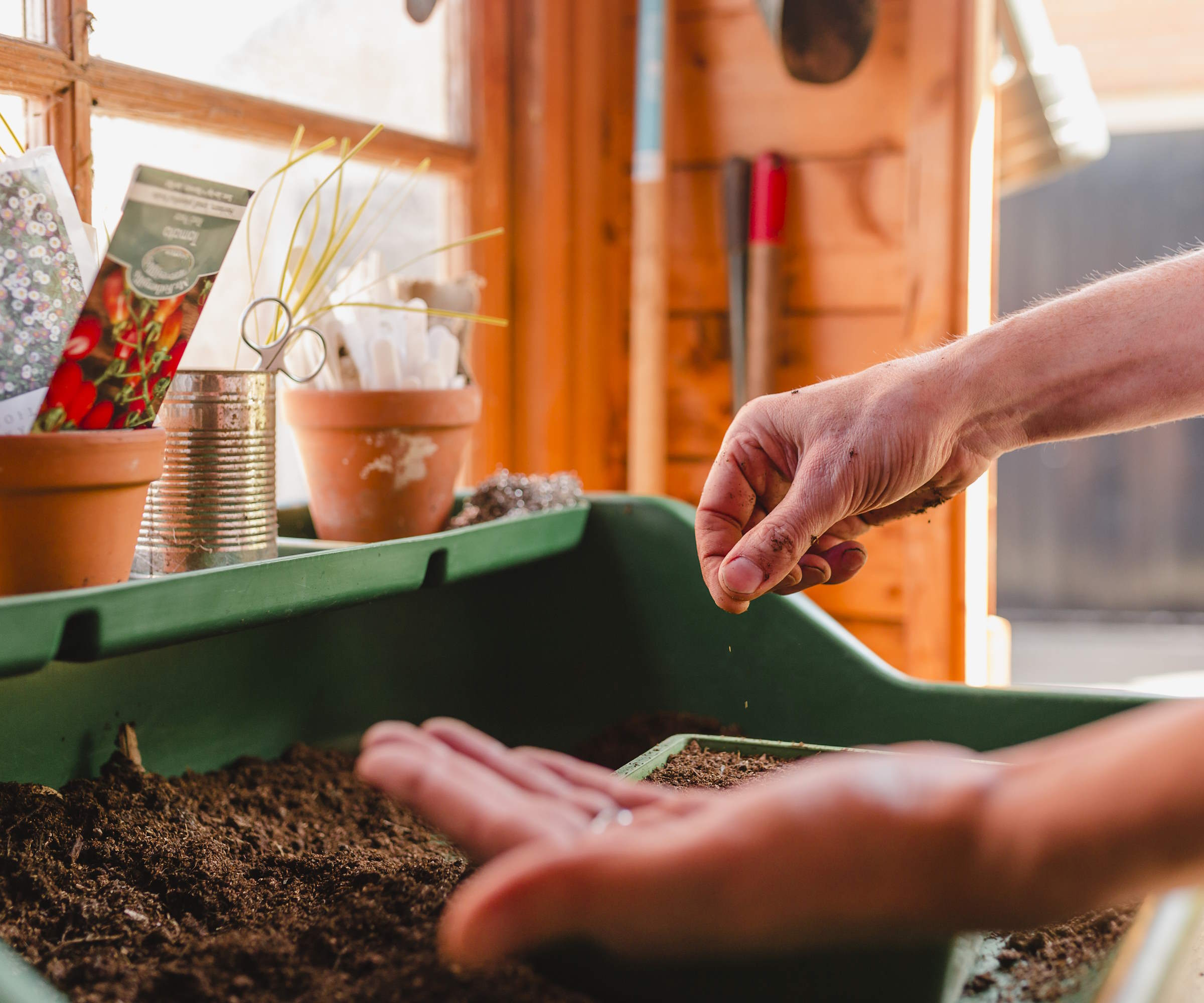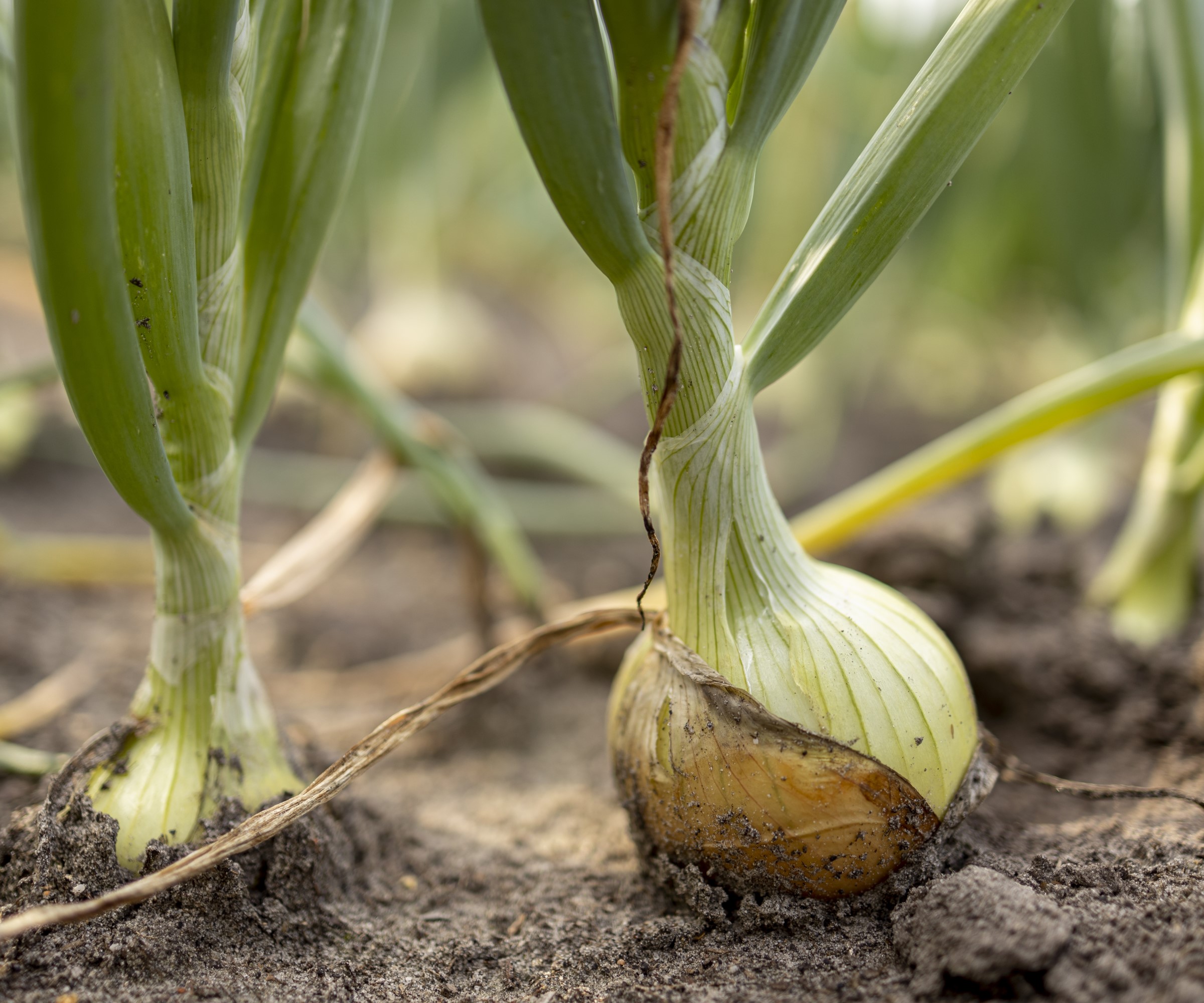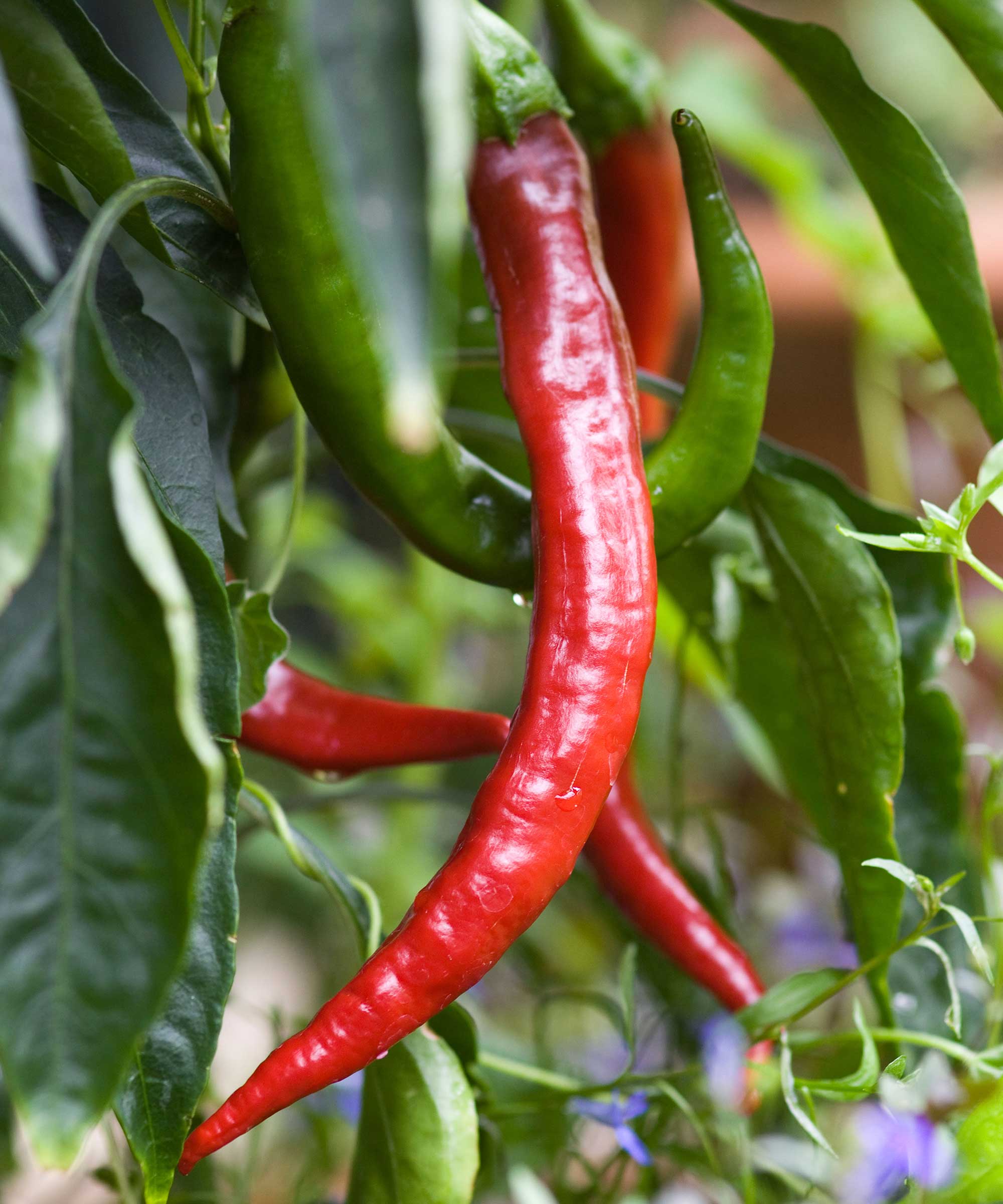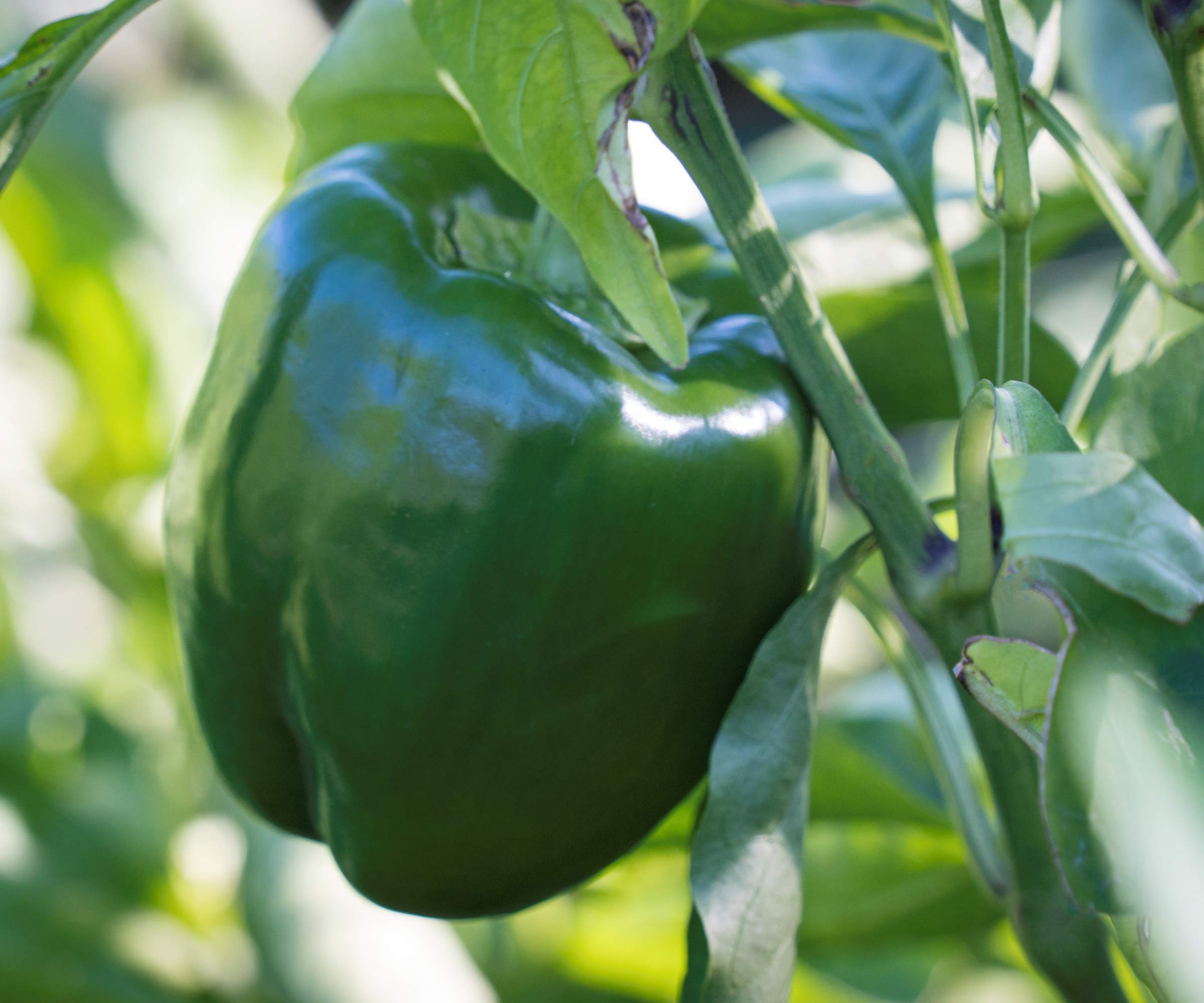Seeds to sow on Boxing Day – 4 crops you can plant during the festive period
Some growers traditionally sow seeds the day after Christmas to reap the rewards of earlier crops and bigger harvests


It would be completely understandable for many gardeners to take the festive period off, however, there are some hardy individuals who always sow seeds over Christmas.
Though the list of plants to sow in December is shorter than at other times of the year, there are vegetables that growers traditionally sow on Boxing Day. Indeed, famed gardener Monty Don, host of TV’s Gardeners World in the UK, wrote in his December 2023 blog: ‘I always sow some seeds on Boxing Day.’
If you want to get a quick fix of gardening come Boxing Day, then let’s take a look at four crops that can be sowed at the end of December and the potential advantages of taking time out of your festive celebrations to plant them.

Seeds will need to be started indoors in December
4 seeds to sow on Boxing Day
It might not be the usual time of year to sow seeds, and owing to the colder temperatures and lower light levels, seeds may benefit from a heat mat or heated propagator. Here are our top four crops to sow on Boxing Day.
1. Onions

Onions grown from seeds are bigger than ones from sets
Boxing Day has long been regarded as the best time to sow onion seeds. This has traditionally been the take of those who want to grow large onions for exhibitions - but is one that many growers now have as an annual fixture in their gardening diary.
You can grow onions from seed or sets. The advantages of seeds is that you can grow more types of onions, seeds are cheaper than sets, they are less liable to bolt, and also onions grown from seed tend to be larger than those from sets.
Onion seeds will germinate at temperatures down to 40°F, but the best results will come from giving them warmth of 68-77°F and lots of good light. Sow seeds in a good quality seed compost, either in trays or modules, and transplant the onion seedlings out in late winter or early spring once the soil warms up.
Design expertise in your inbox – from inspiring decorating ideas and beautiful celebrity homes to practical gardening advice and shopping round-ups.
You can see the range of onions seeds to grow at Burpee.
2. Tomatoes

Tomatoes come in a range of types, colors and shapes
Most gardeners will start growing tomatoes from seed early in spring, ready to plant their tomatoes into their final growing spot - whether outdoors or in a greenhouse - come May.
However, you can extend the season and get earlier tomato harvests by sowing many tomato varieties at the end of December. This is providing you can give them the heat and light they need to grow in winter, and have a backyard greenhouse to grow your tomatoes in, so that they crop at the start of summer.
Whether you are growing store-bought seeds or have harvested tomato seeds at home to regrow, tomatoes want steady temperatures of 64-68°F to germinate in, along with lots of light to prevent them getting too leggy.
You can see the range of tomato seeds to grow at True Leaf Market.
3. Chillies

Chilli plants can take up to 150 days to produce a crop
As with sowing tomatoes in December, some growers will sow many types of chilli peppers to get a much earlier harvest than the traditional sowing times. It means you can be picking cayenne peppers, jalapeno peppers, or harvesting banana peppers earlier than many other growers.
Chilli plants have a very long growing season and it can take many months for some to get to maturity - so making a head start by sowing early can be an understandable decision. Again, providing warmth and light through the use of a heated propagator and grow lights will be required to grow healthy chilli seedlings that can be planted up and grown in a warm greenhouse or inside the house.
Sow chilli seeds in small pots filled with seed compost and cover with a thin layer of vermiculite. The seeds should germinate quickly in temperatures of around 70°F.
You can see the range of chilli seeds to grow at Burpee.
4. Bell peppers

Pepper seeds have a relatively short shelf life
Much like sowing chillies and tomatoes, if you want to sow peppers in December then you will need a heated propagator and grow lamps.
To grow bell peppers from seed, sow seeds half an inch deep in small pots of seed compost. Cover them gently and then give them a consistent level of heat around 65-70ºF. They also want to be consistently moist and not allowed to dry out.
Early sowings can be planted in greenhouses once they are large enough to be handled, or planted outside in warmer climates when the soil temperature is at least 60°F. Peppers can be grown in pots as part of a vegetable container garden, to be grown indoors and then moved outside when the temperatures rise in summer.
As peppers can take 75 days from planting to being ready for cropping, this can provide an early harvest of bell peppers to pick from mid-summer onwards.
You can see the range of bell pepper seeds to grow at True Leaf Market.
FAQs
Is late December a good time to sow seeds?
December is admittedly a quiet time for sowing seeds. The low levels of warmth and light mean you will need a heated propagator, or heat mat, and grow lights to give the seeds sufficient levels to germinate successfully.
A lack of heat and light will result in seeds not germinating or seedlings getting leggy as they desperately strain to try to get to the light.
When you are planning a kitchen garden it is advisable to consider successional sowings of crops to help you get extended harvesting periods.
By sowing seeds in a greenhouse or indoors on a windowsill you can benefit from crops in the vegetable garden earlier than if you wait to sow seeds directly in the ground.

Drew has worked as a writer since 2008 and was also a professional gardener for many years. As a trained horticulturist, he worked in prestigious historic gardens, including Hanbury Hall and the world-famous Hidcote Manor Garden. He also spent time as a specialist kitchen gardener at Soho Farmhouse and Netherby Hall, where he grew vegetables, fruit, herbs, and cut flowers for restaurants. Drew has written for numerous print and online publications and is an allotment holder and garden blogger. He is shortlisted for the Digital Gardening Writer of the Year at the 2025 Garden Media Guild Awards.
